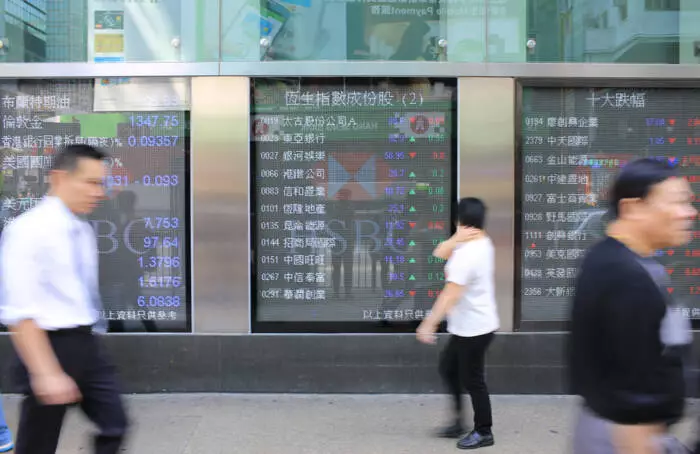The Hang Seng Index experienced a remarkable rally, concluding a week marked by its strongest performance in several months, showcasing a gain of 7.04%. This surge can be attributed to several underlying factors, notably a growing optimism regarding Federal Reserve (Fed) interest rate cuts. The anticipation of a potentially more accommodative monetary policy has invigorated global markets, particularly in Asia. Additionally, the enthusiasm surrounding artificial intelligence, driven by technological advancements and market innovations, has compelled investors to diversify into sectors that promise substantial growth.
One of the most significant contributors to this surge has been the Hang Seng Technology Index, which garnered a remarkable gain of 7.30% during the same period. Heavyweight tech stocks like Alibaba, Tencent, and Baidu experienced impressive growth, with Alibaba surging by 24.10%. The robust performance of these companies reflects not only the resilience of Asia’s tech sector but also investor confidence in these firms’ long-term strategic initiatives, particularly in the AI space.
Mainland China’s equity markets have also exhibited a positive response, albeit at a modest pace compared to the overwhelming gains of the Hong Kong markets. The CSI 300 and the Shanghai Composite Index reported increases of 1.19% and 1.30%, respectively. These movements suggest that while sentiment regarding the Fed’s policy decisions has not heavily influenced mainland stocks as of yet, developments surrounding US-China trade tariffs and China’s ambitions in AI technology have begun to create a favorable environment for cautious investors.
The broader implications of these trends highlight how interconnected the Asian markets have become, particularly in the context of global economic shifts. As China’s economy continues to stabilize and grow amid trade negotiations and tariff developments, the potential for increased investor appetite in mainland equities remains promising.
Meanwhile, the commodities market experienced a varied set of performances during the week ending February 14. Precious metals continued to shine; gold notched its seventh consecutive week of gains, climbing 0.79% to settle at $2,883, and briefly reaching an all-time high of $2,943. Such movements signal a strong demand for safe-haven assets in times of economic uncertainty, leveraging sentiments surrounding inflation and geopolitical tensions.
Conversely, iron ore prices plummeted by 3.14%, impacted by persistent anxiety regarding US-China trade relations. Oil prices faced downward pressure as well, culminating from a combination of increasing US inventories and speculation surrounding the geopolitical climate in Europe. These dynamics underline the complexities inherent in the global commodities market, where varying factors can heavily influence price trajectories.
In Australia, the ASX 200 index exhibited upward momentum with a gain of 0.52%, driven by strong performances from banking and technology sectors. Northern Star Resources surged in tandem with the rise in gold prices, showcasing the intertwined relationship between commodity prices and stock valuations. The robust performance of major banking institutions like the Commonwealth Bank, buoyed by lower loan impairment charges, has further solidified the outlook for the Australian stock market.
In Japan, the Nikkei Index also saw a solid increase of 0.62%, benefitting from a weaker Yen against the US Dollar. This trend may enhance the profitability of Japanese companies that generate significant portions of their revenue from overseas markets. The forthcoming economic data related to Japan’s producer price index, which showed an uptick to 4.2%, will be critical for shaping expectations regarding future Bank of Japan policies.
As we look ahead, the coming weeks hold significant potential for Asian markets. The evolving situation surrounding US tariffs, economic data releases, and geopolitical tensions will play pivotal roles in shaping investor sentiment. Decisions from the Reserve Bank of Australia concerning interest rates could fuel further investment interest in Australian equities, while developments in Japan could either bolster or challenge market stability.
The momentum currently witnessed in the Hang Seng and other Asian indices suggests a cautious optimism among investors, although global political dynamics and economic data will remain critical in guiding future market trajectories.

